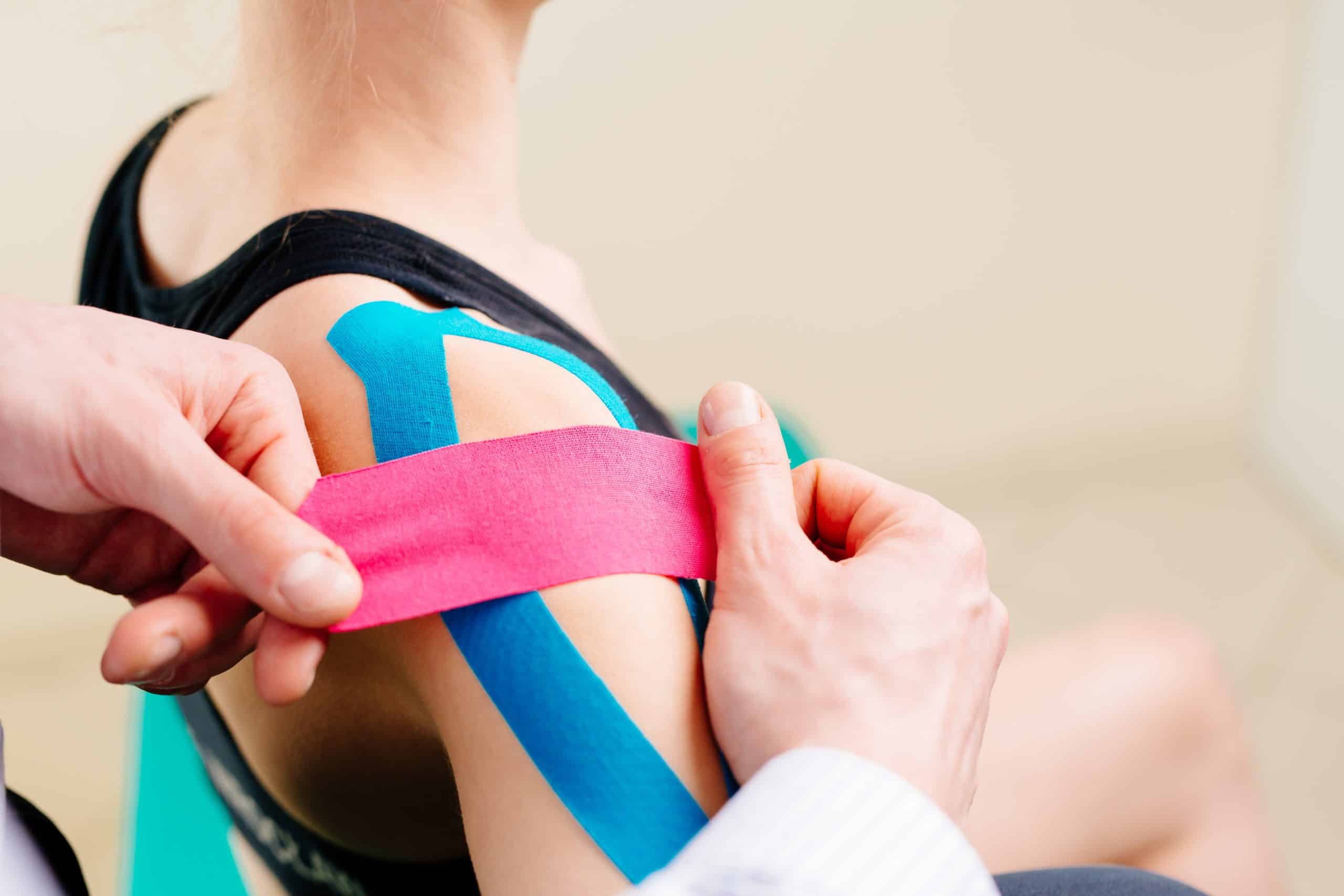
If you use your arms a lot at work, such as lifting heavy items, you will probably suffer from a shoulder injury at some point. Knowing how to tape these injuries can offer relief from the pain by providing more space in your joint. It can also take the pressure off strained muscles by helping to lengthen those muscles. There are three common types of shoulder injuries, and there are two main ways you can tape your injuries, depending on what part of the shoulder was injured. Always consult with an experienced shoulder injury doctor before attempting to self-diagnose or treat your shoulder injury.
In this type of injury, the rotator cuff muscles and tendons have been overstretched or torn after the arm has been rotating quickly. Overuse, due to repetitive stress injury caused by workers’ comp injury, can cause a rotator cuff strain, which is why physical laborers can get this type of shoulder injury.
To tape a rotator cuff strain, you should get someone to help you. Stand up straight and tilt your head slightly away from the injured shoulder. Your assistant should anchor a piece of Kinesio® Tape on the side of your shoulder near the front. Then, your assistant should stretch the tape toward your back and secure the other end just before your spine.
Your assistant should cut another piece of Kinesio® tape, stretch out the middle, and stick it on the first piece about a third of the way down. Repeat this step a second time, applying the other half parallel to the first half.
If you collide with someone while moving heavy items, or during an auto accident, you may get an AC joint injury. The AC joint is where the shoulder and collarbone join. If you have an AC joint injury, your pain will be the worst if you try to reach overhead or sleep on the injured side.
Stabilizing your shoulder with Kinesio tape can help AC joint injuries. To start, you will need to ask someone to help you.
Your assistant should mark out three reference points on your AC joint, the bottom of your shoulder blade, and near your spine, diagonal to the first two points. Your assistant should place the first piece of tape on the spot near your spine and stretch it to your AC joint, smoothing down the tape. He or she should then repeat the step to add a second piece of tape over the first.
Taping your shoulder injuries can help them heal faster and lessen the pain for you, but you should remember to see a doctor if your symptoms persist or worsen. This may be a sign of a more severe problem that should be treated.
Running into people or things can cause your arm bone to pop out of its socket. This is known as a dislocated shoulder. If you have had a dislocated shoulder before, you are more likely to have it again. You should see a doctor for a dislocated shoulder, but taping it can help stabilize your injury and lessen your pain. Use the same taping method as you would with an AC joint injury.
If you suffered a shoulder injury and need to find an experienced doctor call (800) 897-8440 today!
Find A Doctor | New York Doctors | New Jersey Doctors | Connecticut Doctors
Medical Services | Conditions Treated | Insurance | Contact Us | Privacy Policy | Site Map | Terms of Service | Blog | Advertising
This site does not provide or endorse any medical or legal advice. All medical practices listed on this site are independently owned and operated by licensed physicians. Learn more
Copyright © var currentYear = new Date().getFullYear();document.write(currentYear); Injured Call Today. All Rights Reserved.
